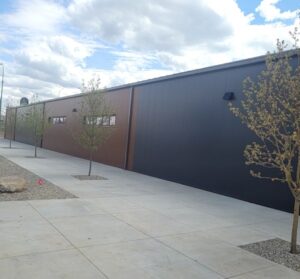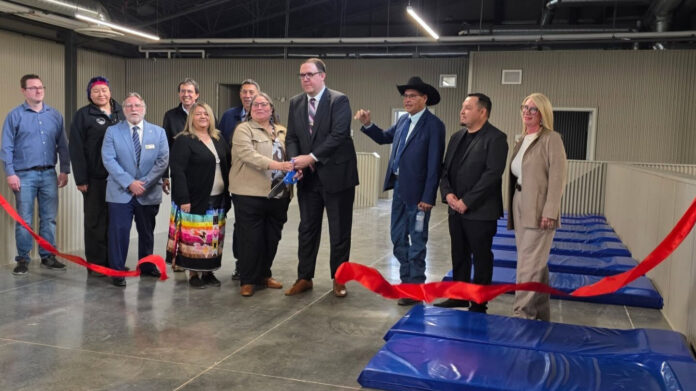Last week was the grand opening of the Lethbridge Wellness Shelter Expansion.
The Alberta government teamed up with the Lethbridge Housing Authority and shelter operator the Blood Tribe Department of Health to expand capacity, by way of the Affordable Housing Partnership Program.
With an investment of over $4 million to help local partners in addressing homelessness in Lethbridge, the City of Lethbridge also donated the land for the expansion.
Mayor Blaine Hyggen had noted the increased capacity will ensure those in need in the community are better cared for.
An Open House and official ribbon cutting ceremony was held to mark the occasion with special guests and local organizations and agencies, including Alberta Minister of Assisted Living and Social Services Jason Nixon and Lethbridge Housing Authority CAO Robin James.
“We’ve put some blood, sweat and tears into this project and we’re very pleased to introduce it to you today,” said James, during the ribbon cutting event held this past Thursday.
It’s been a long time coming, James adds. “The shelter has been far over its capacity for a long time. We’re grateful we’re finally able to open it up.”
Guests started moving into the expansion area last Thursday night.
The old capacity of the shelter, James notes, was 91 plus 30 stabilization beds. “Now, the new expanded space is 200 and there’s still room for 30 stabilization beds.”
In January and February, during the cold snap, the shelter was sleeping 255 people.
“It’s not that we didn’t have a need for it, we just didn’t have the space for it. Finally, we have a space that is more safe for the guests staying there and also for the staff working,” says James.
Moving forward, renovations will begin on the existing shelter to create programming space.
“So, we’re able to provide more services to clients inside the shelter. They’ll be able to have some transition pieces to meet their needs. We’re looking at things like a navigation hub or housing services or recovery orientated systems that can be imbedded right into the shelter, so people aren’t staying stuck within that shelter system. They’re actually using the shelter as a point of entry to transition onto a different type of housing,” adds James.

(Photo by Stan Ashbee)







